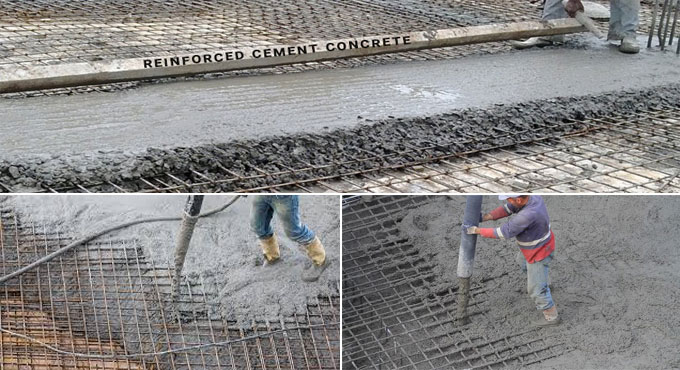
Design Of Reinforced Concrete
Many problems occur while working on design and analysis of reinforced concrete. There are approx. 3 ideas which help to solve many problems regarding the design of reinforced concrete.
1. For relating stresses to strains mechanics of materials have to allow the engineers.
2. Geometry of deformation of sections is consistent under the different types of loading.
3. The sections must be in equilibrium. Internal moment can resist the external moments. The sum of internal axial forces is equal to external axis load.
Engineers have to use the ideas to solve most of the analysis problems.
It is quite impossible to analyze concrete structure and design that structure. But now there is an option which will help to make design the reinforced concrete very simple. A huge problem is that a consist need for detailing each member throughout. Steel structure requires the detailed design of connections.
In the area of concrete structure users have to determinate the area of longitudinal and lateral reinforcement is required in every member and the way for arranging and connecting the reinforcement to ensure structural performances which is acceptable. By this way the method is way simpler than before.
Purpose of the article
1. To establish a good understanding of behavior of reinforced concrete structures.
2. To develop the method which is used and also get the familiarity with codes and different specifications governing practical design.
In this article readers will understand the basic work of concrete and steel as structural materials and the behavior of reinforced concrete members. If readers understand these then
A.) They will able to approach the design in a more appropriate way.
B.) They will also able to take the changes in code provisions better.
C.) Users are able to design that kind of reinforced concrete structures that are comparatively safe, affordable and efficient.
Reinforced concrete is used in structures because of low cost, formability, strength, weather and good resistance against fire.
Specification of design
Building is constructed and designed according to the building code. The code is a legal document regarding structural safety, fire safety, ventilation, plumbing, and many more. The building codes gives directions about the required design and the limitations.
Many metropolitan cities have their own building codes like that many municipalities have model building code for specific needs. Various nonprofit organizations write the model codes. The popular building codes are
A.) BOCA national building code.
B.) The uniform building code.
C.) The standard building code.
D.) International building code.
U.S.A. does not have any national code of structural concrete.
Loads
There are 3 types of loads available. The types are mentioned below.
Dead loads: These types of loads remain same in magnitude and fix in particular location. Example of this loads are floor fill, finished floor, sidewalks and plastered ceiling for buildings.
Live loads: This type of loads can be stay fully or partially in a particular place or not. It may be changed in location.
Environmental loads: These types of loads are wind, earthquake and snow loads.
The serviceability
It requires
1. If any cracks happen then it has to be kept in tolerable limits.
2. Vibrations should be minimized.
3. Deflections should be small.
Safety
A structure of building should be safe against collapse. If the loads and internal effect of the building are predicted perfectly then there is no need of worry. But some uncertainties can stay like
A.) Actual amount of load
B.) Loads might be transferred in different way than the engineers have thought.
C.) The concept about the analysis of structures may not be correct.
D.) Actual behavior of concrete may differ.
Types of designs
There are two types of designs available.
1. The working stress method.
2. Strength design.
Strength design
The ACI code is a strength code since 1971. Users have to select the concrete dimensions and reinforcements to resist forces from certain hypothetical overload stages. The design concept is named as strength design. The strength design method may be expressed like that,
Strength provide = Strength required to carry factored loads
The procedure of design
A.) Users have to multiply the working loads by the load factor.
B.) Have to proportion members which have such properties.
C.) Users have to determine cross sectional properties for resisting failure under these loads.
Allowable stress design
It is an alternative of strength design method. Members should be proportioned so, the stresses in the steel and concrete remain in specified limits. This limit is known as allowable stresses. Allowable stress design is also known as working stress design.
The working stress method may be expressed by this way.
F = allowable stresses (f allowable)
Where,
f = An elastically computed stress, such as by using the flexure
formula f = Mc/I for beam.
F allow = A limiting stress prescribed by the building code as a percentage of
the compressive strength f ?c for concrete, or of the yield stress fy
for the steel reinforcing bars.


